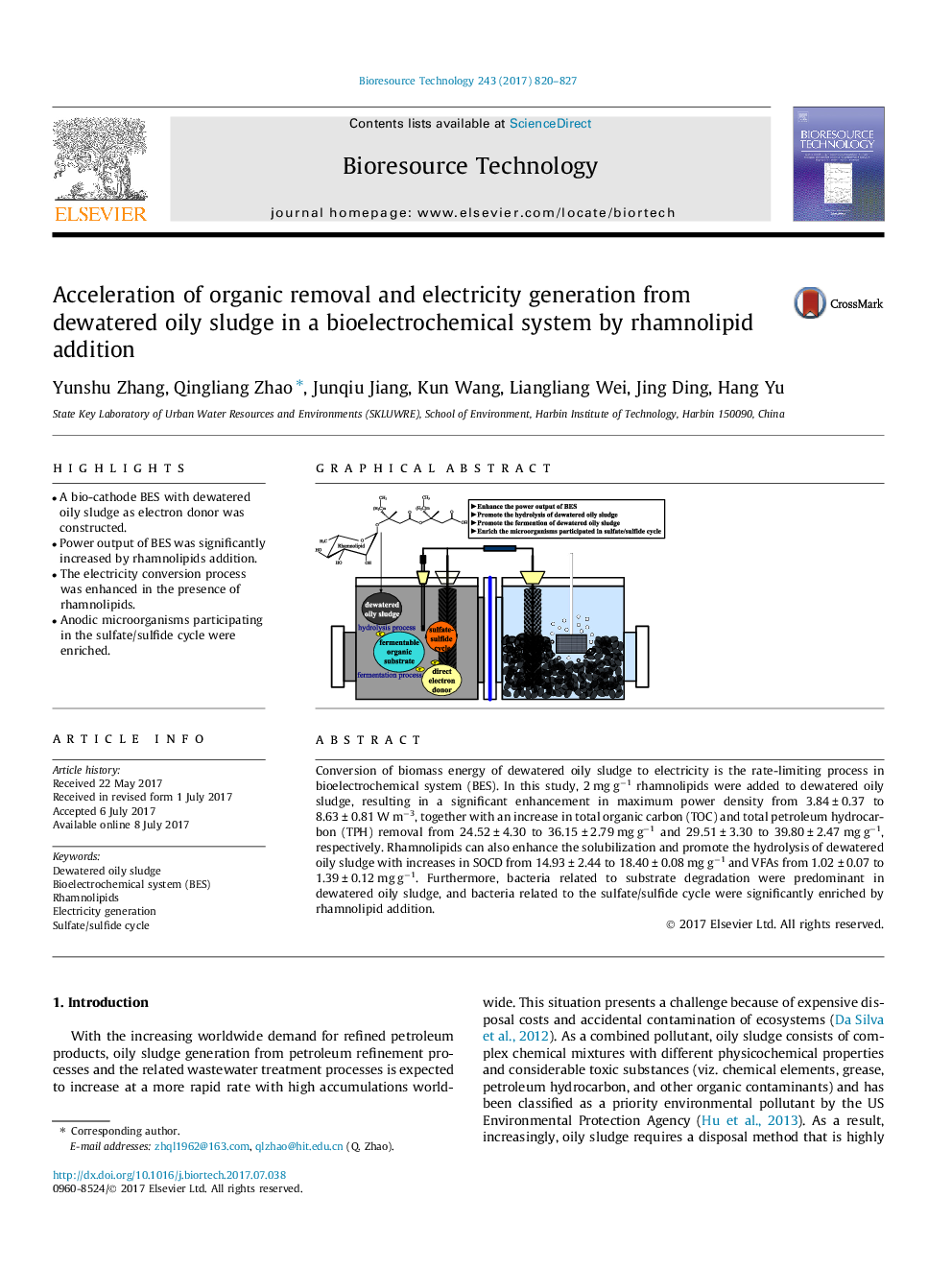| Article ID | Journal | Published Year | Pages | File Type |
|---|---|---|---|---|
| 4996920 | Bioresource Technology | 2017 | 8 Pages |
â¢A bio-cathode BES with dewatered oily sludge as electron donor was constructed.â¢Power output of BES was significantly increased by rhamnolipids addition.â¢The electricity conversion process was enhanced in the presence of rhamnolipids.â¢Anodic microorganisms participating in the sulfate/sulfide cycle were enriched.
Conversion of biomass energy of dewatered oily sludge to electricity is the rate-limiting process in bioelectrochemical system (BES). In this study, 2 mg gâ1 rhamnolipids were added to dewatered oily sludge, resulting in a significant enhancement in maximum power density from 3.84 ± 0.37 to 8.63 ± 0.81 W mâ3, together with an increase in total organic carbon (TOC) and total petroleum hydrocarbon (TPH) removal from 24.52 ± 4.30 to 36.15 ± 2.79 mg gâ1 and 29.51 ± 3.30 to 39.80 ± 2.47 mg gâ1, respectively. Rhamnolipids can also enhance the solubilization and promote the hydrolysis of dewatered oily sludge with increases in SOCD from 14.93 ± 2.44 to 18.40 ± 0.08 mg gâ1 and VFAs from 1.02 ± 0.07 to 1.39 ± 0.12 mg gâ1. Furthermore, bacteria related to substrate degradation were predominant in dewatered oily sludge, and bacteria related to the sulfate/sulfide cycle were significantly enriched by rhamnolipid addition.
Graphical abstractDownload high-res image (204KB)Download full-size image
